Classic candies have a way of connecting generations, each with a unique story and a taste that stands the test of time. From the world’s first mass-produced chocolate bar to iconic treats still beloved today, these confections reveal the evolution of flavors, packaging, and even candy-making technology. Let’s dive into the origins and legacies of these beloved sweets, exploring how each one earned its place in candy history.
Skittles
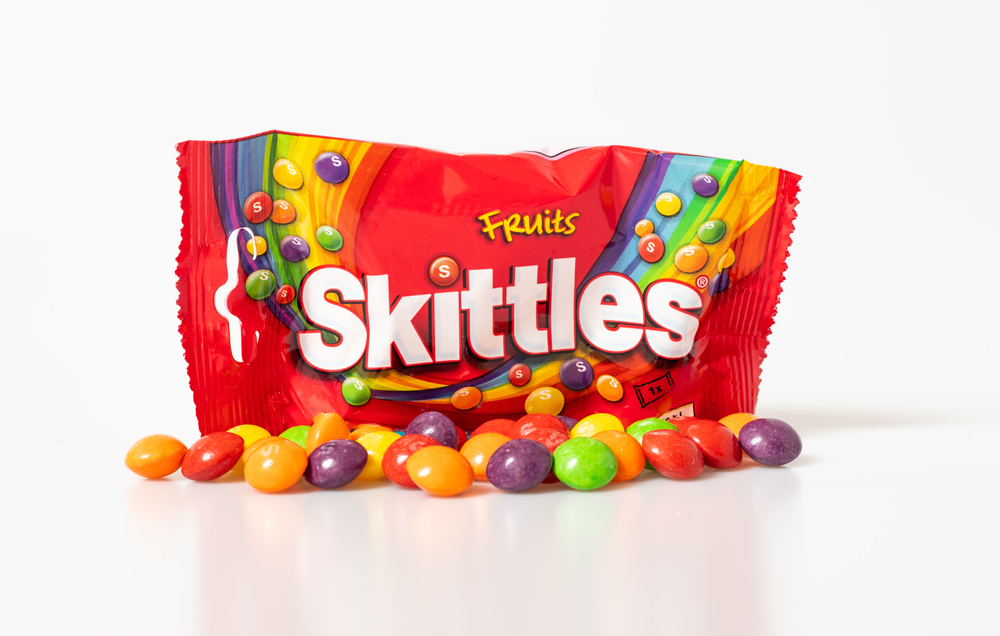
Skittles were first made in the United Kingdom in 1974, and they were introduced to North America in 1979, where they quickly gained popularity. Produced by the Wrigley Company, a division of Mars, Incorporated, these are known for their colorful, fruity candy shells that come in a wide range of flavors. Originally available in just five flavors—strawberry, orange, lemon, grape, and lime—they have since expanded to include tropical, sour, and wild berry variations. The brand’s iconic tagline, “Taste the Rainbow,” highlights the vibrant array of flavors and colors that make it unique. It has become a cultural icon, with limited-edition versions like “America Mix” for patriotic events and “Darkside” for Halloween. The candy’s bright, small pieces make it easy to snack on or share, appealing to a wide range of age groups. They are now enjoyed in over 65 countries, solidifying their place as one of the world’s favorite fruit-flavored candies.
Twix
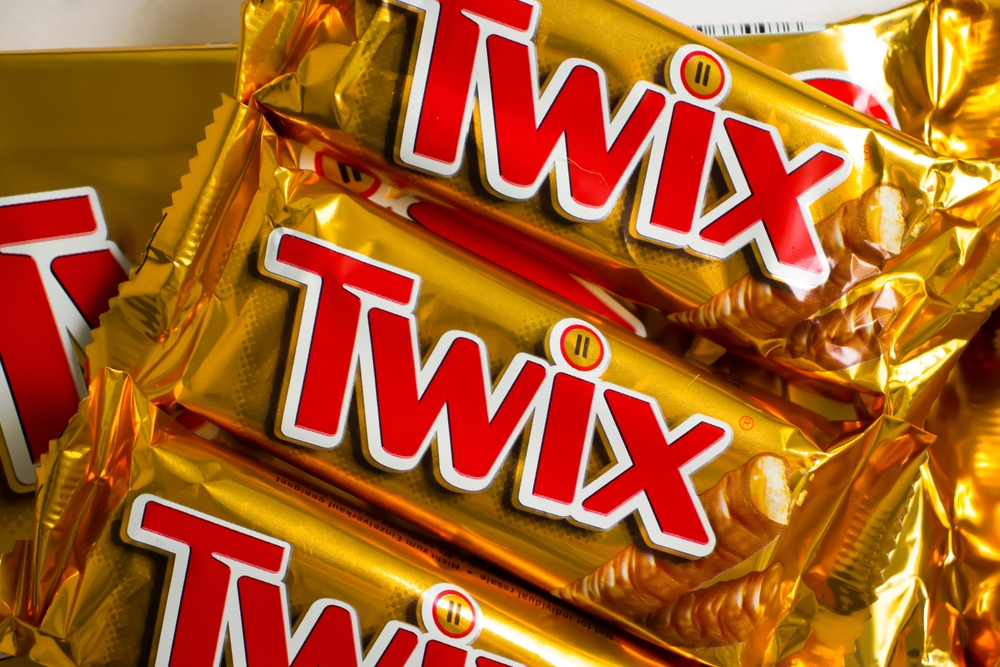
Twix was first manufactured in the United Kingdom in 1967 by Mars, Incorporated and later made its way to the U.S. in 1979. This unique candy bar combines a crunchy biscuit base topped with caramel and coated in milk chocolate, and it is conveniently packaged in twin bars, hence the name “Twix.” Since its introduction, it has evolved into a global favorite, available in various flavors such as peanut butter, cookies & crème, and white chocolate. The split branding, with “Left Twix” and “Right Twix,” has become a humorous marketing angle, adding a playful rivalry to its image. Its combination of textures and flavors appeals to a wide range of candy lovers, especially those who enjoy both chocolate and cookie snacks. Its popularity has extended beyond its original chocolate bar format, inspiring products like Twix ice cream and Twix-flavored coffee creamers.
M&M’s
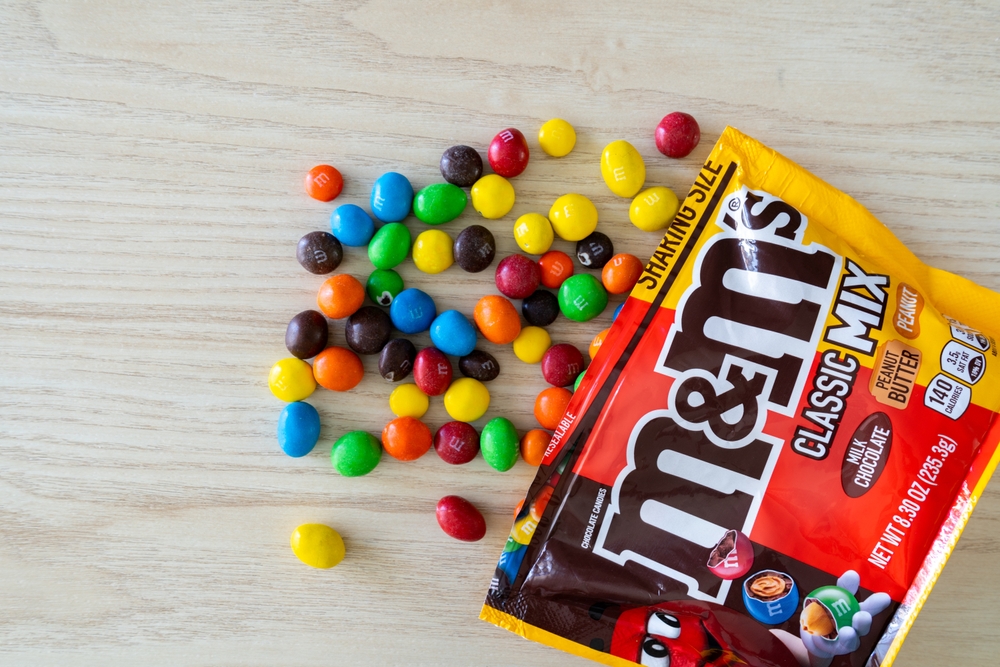
M&M’s were created in 1941 by Forrest Mars, Sr., inspired by the sugar-coated chocolates he saw soldiers eating during the Spanish Civil War to prevent them from melting. Produced by Mars, Incorporated in the United States, it quickly became popular for their practical, durable coating that kept the chocolate intact in warmer conditions. Originally made exclusively for military rations, they became available to the public in 1947 and have since become a global candy phenomenon. Over the years, it has introduced numerous variations, from peanut to pretzel and caramel fillings, adapting the product to changing tastes while maintaining the iconic “melt in your mouth, not in your hand” slogan. The colorful candy shells have become a brand hallmark, with signature red, blue, and yellow characters adding to their appeal. Today, they are sold in over 100 countries, and limited edition flavors regularly keep fans excited. The classic milk chocolate M&M remains a top seller, especially during holidays with seasonal color schemes.
Snickers
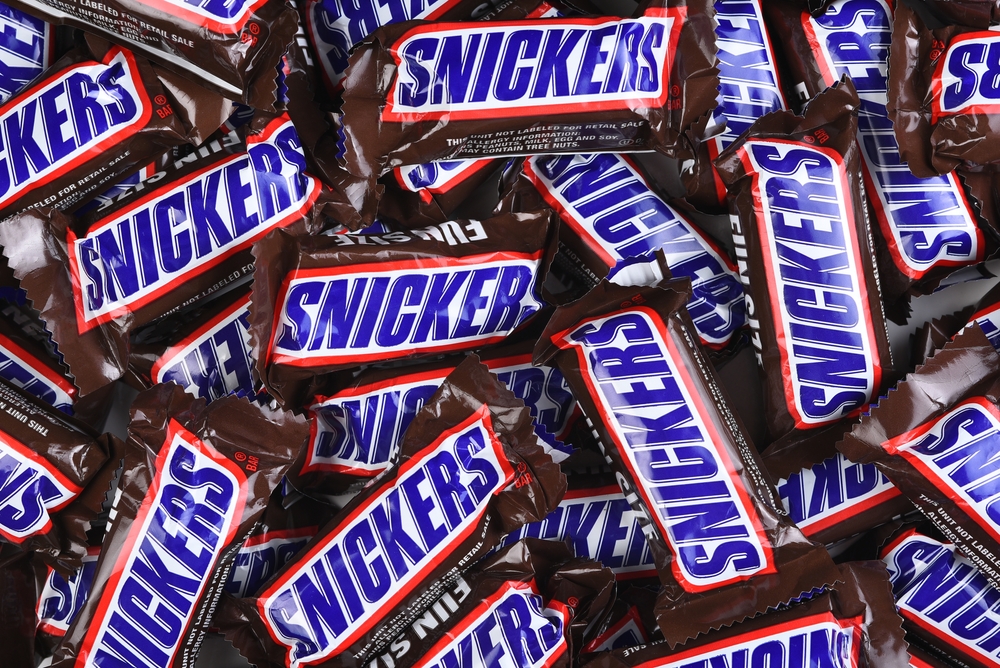
Snickers, developed by Mars, Incorporated in 1930, was named after a beloved family horse owned by the Mars family. This popular candy bar combines nougat, caramel, and peanuts, all coated in milk chocolate, creating a satisfying mix of textures and flavors. Originally sold for just five cents, it has grown to become one of the best-selling candy bars in the world, available in more than 70 countries. In recent years, variations like Snickers Almond, Peanut Butter, and White Chocolate have been introduced to appeal to diverse tastes. Known for its “You’re Not You When You’re Hungry” campaign, it has established itself as a go-to snack for hunger satisfaction. The bar remains a favorite, especially among athletes and outdoor enthusiasts for its high-energy content. It is now a staple in vending machines, gas stations, and convenience stores worldwide, recognized by its brown wrapper and satisfying taste.
Butterfinger

Butterfinger was introduced in 1923 by the Curtiss Candy Company in Chicago, Illinois, and quickly became known for its crisp peanut butter core and chocolate coating. The name “Butterfinger” was chosen through a public contest, adding an element of fan involvement in its branding from the start. Over the years, the brand has changed hands multiple times, and it is now owned by Ferrero, which acquired it in 2018. Ferrero’s recent recipe revamp aimed to enhance the peanut butter flavor while reducing artificial ingredients, though this move met with mixed reactions from longtime fans. Butterfinger’s unique texture, with its flaky, layered filling, sets it apart from other peanut butter candies. Its distinctive flavor and consistency have made it popular for snacking and as an ingredient in other treats like Butterfinger ice cream bars and toppings.
Milky Way
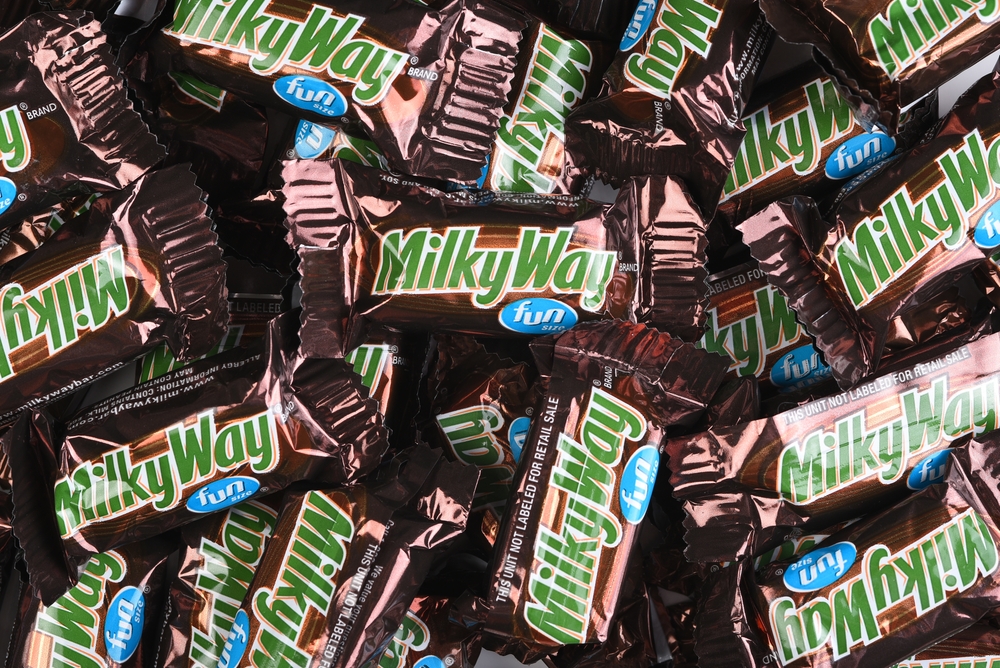
Milky Way was launched by Mars, Incorporated in 1923, and it was the first candy bar in the U.S. to combine chocolate with a filling, offering a chocolate-malt nougat surrounded by milk chocolate. The bar was inspired by the milkshakes popular in the 1920s, aiming to capture that creamy taste in solid form. Initially available in both chocolate and vanilla varieties, it soon gained a loyal fan base, especially among those who enjoyed its rich, sweet flavor. Today, it is available in variations such as Milky Way Midnight, with dark chocolate and vanilla nougat, and Simply Caramel, focusing on the caramel layer. It remains one of the classic American candy bars, often overshadowed by newer confections but cherished for its nostalgic flavor. It’s a staple treat for those who appreciate the classic mix of nougat and caramel. The bar’s name and flavor evoke images of indulgence, keeping it relevant nearly a century after its creation.
Reese’s Peanut Butter Cups
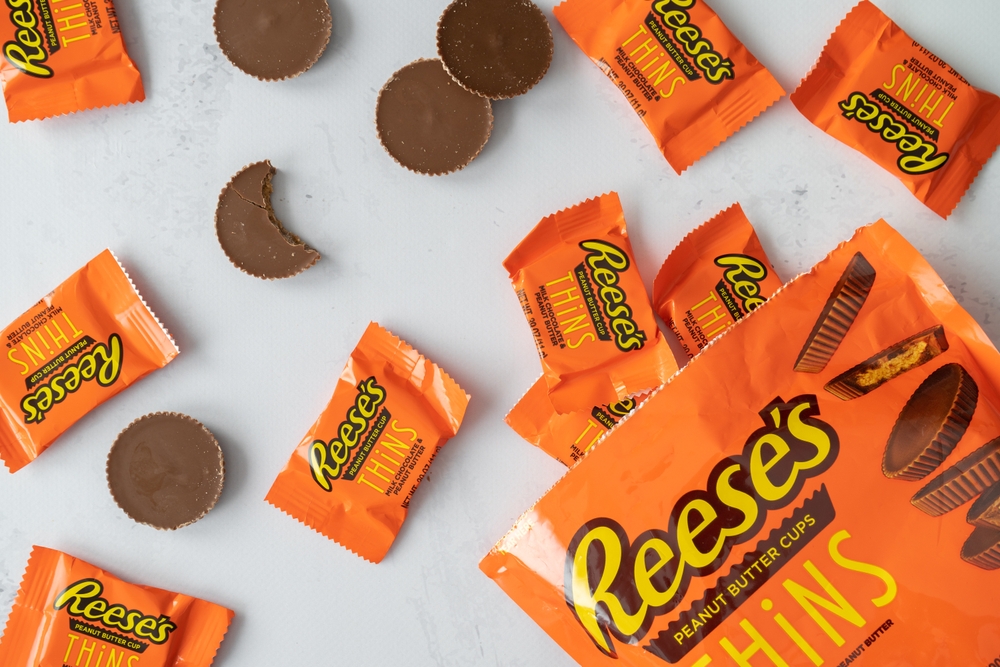
Reese’s Peanut Butter Cups were invented by Harry Burnett Reese in 1928 in his basement in Hershey, Pennsylvania. Reese, a former dairy employee for Milton Hershey, crafted these treats as a unique combination of chocolate and peanut butter, creating a one-of-a-kind flavor profile that quickly gained popularity. Its brand was later acquired by the Hershey Company in 1963, which helped propel it into mainstream recognition. Over time, the cups have evolved into multiple sizes and versions, from miniatures to larger “Big Cups,” as well as limited edition flavors like white chocolate and dark chocolate variations. They are sold globally and have become one of the most successful candies, often cited as America’s favorite candy. Seasonal shapes like pumpkins, hearts, and eggs are released around holidays, adding festive fun to the brand. The combination of creamy peanut butter and smooth milk chocolate remains a classic favorite that has inspired other products like Reese’s Pieces and Reese’s ice cream.
Baby Ruth
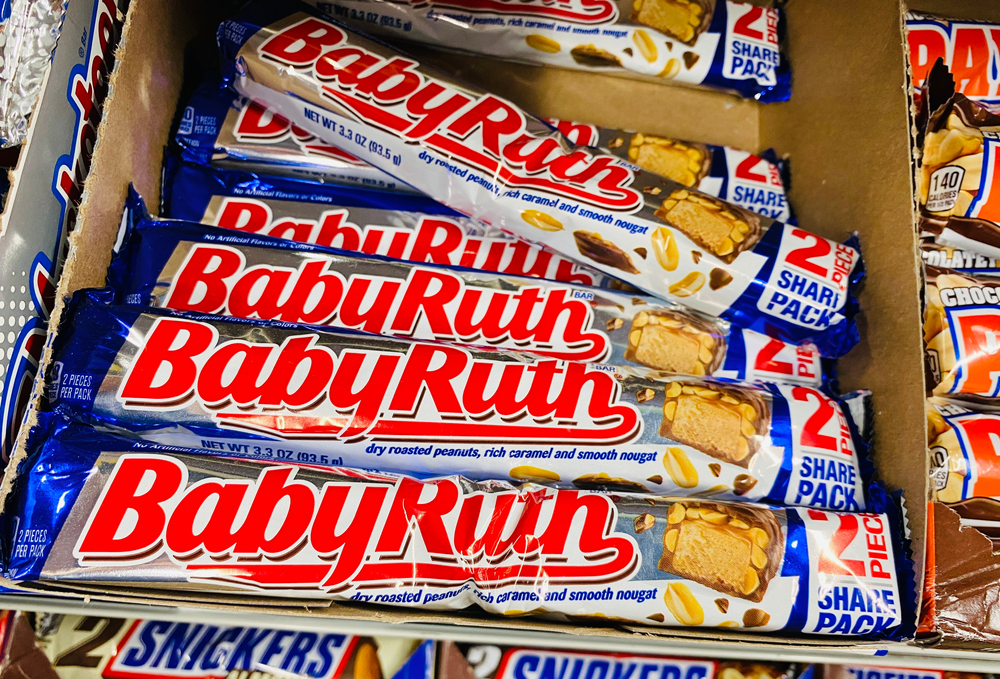
Baby Ruth was first introduced in 1921 by the Curtiss Candy Company, also based in Chicago, Illinois. Despite the common belief that it was named after baseball legend Babe Ruth, the company claimed it was actually named after President Grover Cleveland’s daughter, Ruth. This claim helped the company avoid paying royalties to the famous baseball player, although the truth remains a subject of debate. It features a combination of peanuts, caramel, and nougat, all coated in chocolate, creating a hearty and satisfying candy bar. Today, it is produced by Ferrero, following their acquisition of Nestlé’s American candy brands in 2018. The bar’s chunky, nutty texture appeals to fans of rich and filling snacks, setting it apart from smoother chocolate bars.
Hershey’s Kisses
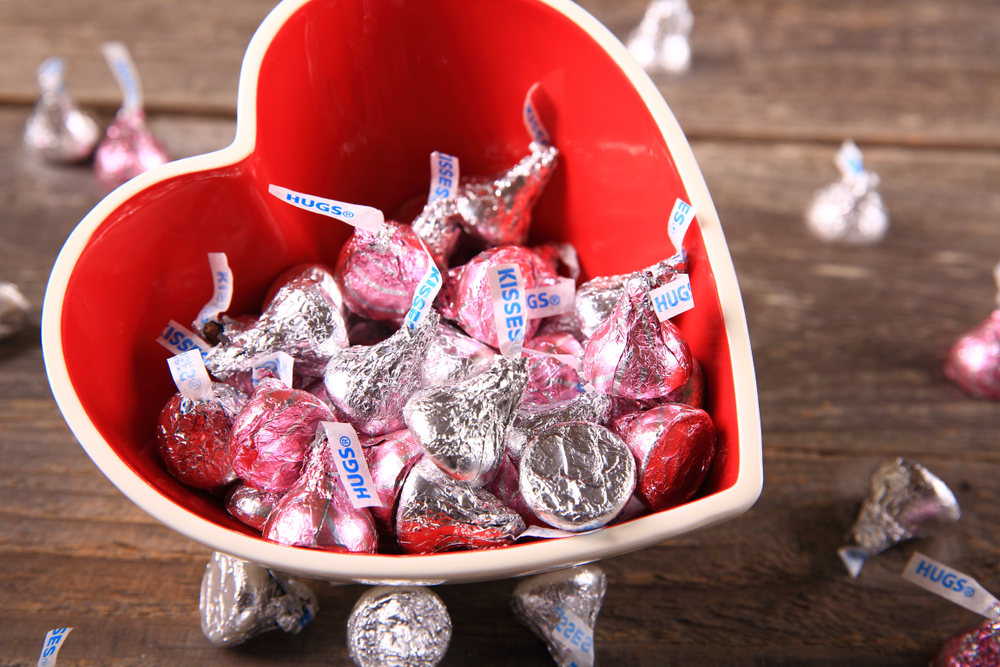
Hershey’s Kisses were first introduced in 1907 by the Hershey Company, founded by Milton S. Hershey in Pennsylvania. The bite-sized chocolate drops became instantly recognizable due to their unique teardrop shape and foil wrapping, which originally had no paper plume until 1921. Over the years, it has expanded the line to include flavors like almond, caramel, and even cookies and crème, giving the classic treat modern twists. Although the exact origin of the “Kisses” name is unknown, it is believed to come from the sound the machine made when dropping each piece onto a conveyor belt. Today, they remain one of Hershey’s flagship products, widely recognized around the world for their iconic shape and wrapping. The brand releases seasonal varieties and limited edition flavors throughout the year, which keeps the classic treat fresh and engaging for fans. Hershey’s Kisses remain a popular gift item, especially around holidays such as Valentine’s Day and Christmas, when themed versions flood store shelves.
Fry’s Chocolate Cream

Fry’s Chocolate Cream, introduced in 1866 by J. S. Fry & Sons in Bristol, England, holds the title as the world’s first mass-produced chocolate bar. The bar was created by the innovative company that had already pioneered chocolate-making techniques in the early 19th century. Known for its smooth, creamy fondant center wrapped in rich dark chocolate, It quickly gained popularity across the U.K. and beyond. J. S. Fry & Sons later merged with Cadbury in 1919, and the bar continued under Cadbury’s ownership, remaining one of the oldest continuously sold chocolate bars. In recent years, it has maintained its distinct Victorian-era packaging, adding to its nostalgic appeal for fans of classic confectionery. Although primarily available in the U.K., it has a dedicated following worldwide, appealing to those who enjoy the balance of dark chocolate with a sweet fondant center. The bar has inspired other products like Fry’s Peppermint Cream, highlighting its influence on classic British chocolate treats.
This article originally appeared on Rarest.org.
More from Rarest.org
16 Most Beautiful and Endangered Coral Reefs

Coral reefs captivate with their stunning colors and rich biodiversity. Yet, these marine treasures face grave threats from climate change and human activities. The following reefs are not only some of the most beautiful but also among the most endangered. Read More.
21 Strange Geological Formations Found in Uninhabited Lands
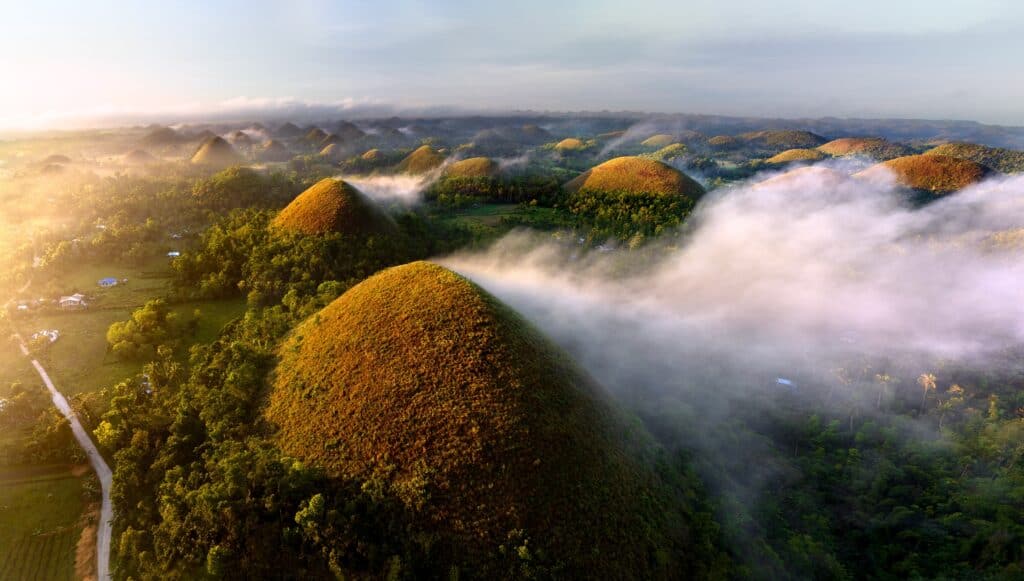
The Earth hides some of its most extraordinary formations in uninhabited regions. These remote landscapes are home to geological wonders that seem almost otherworldly. Read More.
15 Towering Sand Dunes Creating Otherworldly Landscapes
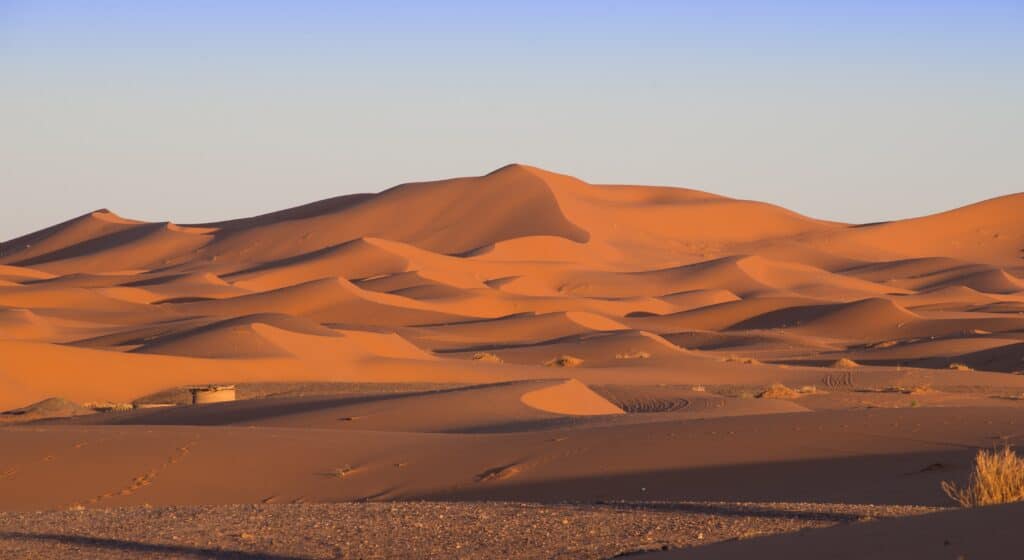
Towering sand dunes are some of the most mesmerizing natural wonders on Earth, creating landscapes that seem almost otherworldly. These colossal formations, sculpted by wind and time, rise dramatically from the ground, offering breathtaking views and a sense of awe to those who witness them. Read More.
